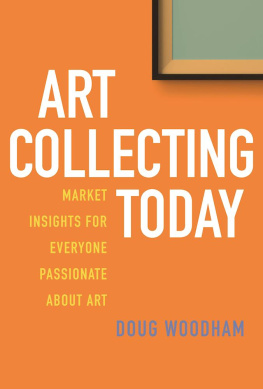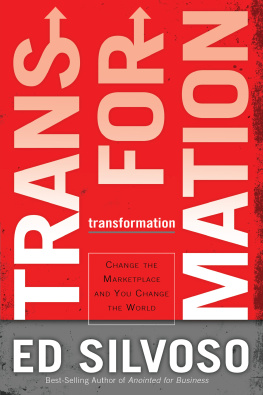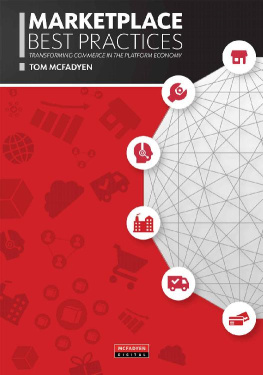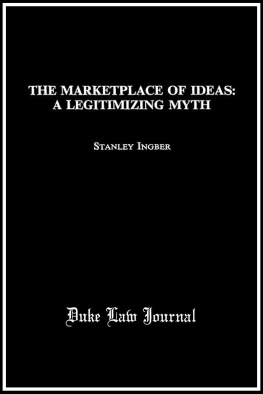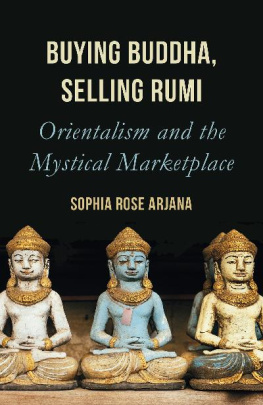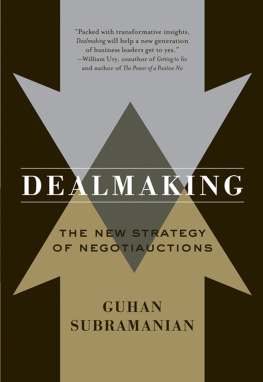Copyright 2016 by Doug Woodham
All rights reserved. Copyright under Berne Copyright Convention, Universal Copyright Convention, and Pan American Copyright Convention. No part of this book may be reproduced, stored in a retrieval system, or transmitted in any form, or by any means, electronic, mechanical, photocopying, recording or otherwise, without the express written consent of the publisher, except in the case of brief excerpts in critical reviews or articles. All inquiries should be addressed to Allworth Press, 307 West 36th Street, 11th Floor, New York, NY 10018.
Allworth Press books may be purchased in bulk at special discounts for sales promotion, corporate gifts, fund-raising, or educational purposes. Special editions can also be created to specifications. For details, contact the Special Sales Department, Allworth Press, 307 West 36th Street, 11th Floor, New York, NY 10018 or .
20 19 18 17 16 5 4 3 2 1
Published by Allworth Press, an imprint of Skyhorse Publishing, Inc.
307 West 36th Street, 11th Floor, New York, NY 10018.
Allworth Press is a registered trademark of Skyhorse Publishing, Inc., a Delaware corporation.
www.allworth.com
Cover design by Mary Ann Smith
Library of Congress Cataloging-in-Publication Data is available on file.
Print ISBN: 978-1-62153-573-7
Ebook ISBN: 978-1-62153-574-4
Printed in the United States of America
Table of Contents
To my wife, Dalya, and our daughters, Abby and Lizzy
Introduction
People are passionate about art. They like looking at it, thinking about it, and talking about it. Some also like collecting it.
This book provides invaluable market insights for everyone interested in the inscrutable and endlessly fascinating world of art. Whether a seasoned art world professional or an uninitiated newcomer, readers will learn how the art marketplace works in practice and how to smartly navigate it. The essential premise of this book is that by sharing the good, the bad, and the ugly about the market, collectors will be able to pursue their passion with more confidence. Those who may have been put off by art world practices will finally feel they have the knowledge needed to participate confidently.
In pursuit of this idea, I will take you to the night of October 18, 1973, when the actions of a collector heralded the beginning of a hyper-commercialized art market focused on contemporary art. In the years since, art collecting has come to require specialized knowledge. I will explain how the marketplace puts a price on an artwork and how different markets have formed for six well-known artists, including Christopher Wool, Yayoi Kusama, Rene Magritte, and Amedeo Modigliani.
Because buyers are sometimes blinded by passion, I will share practical wisdom for buying art effectively from galleries and at auction. A recurring question is which of these two channels offers buyers a better deal. While there is no single answer, I will explain how prices in these markets relate to each other so that buyers are more informed and can make smart purchase decisions.
Selling art is much harder than buying it. We will visit an evening auction where the ideas I explain in this book are used by siblings to sell their parents valuable art collection. For those curious about deal-making practices at the very top end of the auction market where multimillion dollar works of art are sold, I will explain the mysterious world of enhanced hammer deals and guarantees.
Well-intentioned rules and tax laws can lead to unintended consequences, and the art world is no different. But there are many surprising twists and turns. I will explain how Andy Warhol is now considered cultural property by German and Italian authorities, subject to export rules and potential sale restrictions, and how tax laws in the United States reward art investors but penalize art collectors.
Where money goes, scoundrels follow. The marketplace is littered with incidents of duped buyers and sellers. As the price of art soars, the schemes and shenanigans of people who prey on those passionate about art grow bolder and more nefarious. I share throughout the book examples of bad behavior but, more importantly, actions collectors can take to protect themselves.
I wrote this book to help open the world of art to more people. It reflects my experiences as a collector, businessman, economist, and president of the Americas for Christies. It also draws on interviews I did in 2015 and 2016 with close to one hundred collectors, lawyers, art advisors, gallerists, and auction specialists in the United States and Europe.
A little bit about me: I grew up in a middle-class family in Toledo, Ohio, that had little interest in art. When I was in high school, however, my girlfriends father opened an art gallery in town for prints. He explained to me the different techniques artists use to create prints and showed me my first Picasso. The experience was fascinating and made me start questioning further. Why was a Picasso print so valuable? Why did the gallery source everything from New York? Who were the younger artists with a shot at being the Picasso of my generation? Since this was pre-Internet days, I soon found myself spending time in the Toledo Museum of Art looking at art and trying to make sense of it.
A lucky break occurred a short time later when I heard about a local group of collectors who met to talk about the goings-on in the world of contemporary art. I joined the group and became their youngest member when I was fifteen years old. The most important collectors in Toledo at that time were Joseph and Mildred Gosman, who had an outstanding collection of Postwar and Contemporary art that included work by Robert Rauschenberg, Georgia OKeeffe, Willem de Kooning, and Joseph Cornell. They taught me the importance of constantly looking at art to see what resonates, confuses, and pushes the envelope. Their advice has informed my approach to art ever sinceto stand in front of as much art as possible to constantly challenge my eye. To critically assess what makes an artist important relative to his or her peers. For historical work, to understand the socioeconomic zeitgeist when the work was created because it shapes in some way what you are looking at. Because New York was the center of the art world, I had to find a way to be there. I used money from my summer jobs in high school to go to Manhattan and spend time in museums and galleries. When I was in my early teens, I went to the Whitney Biennial for the first time, kicking off a decades-long relationship with the museum. I have been fortunate to be able to contribute to the museum over the years, including as an advisor to the board of trustees on the museums strategy and financial plan associated with moving from its Upper East Side location to the Meatpacking District.
In addition to art, I also love economics, especially how markets function. I graduated from the University of Michigan with a PhD in Economics. I met my future wife there, who was also a PhD student in economics. Our first date was to the Detroit Institute of Arts, an institution I reconnected with decades later when I led the Christies team helping the Institute extract itself from the City of Detroit bankruptcy. I talk about how the Detroit Institute narrowly escaped being liquidated at the end of .
Shortly after getting my PhD and a Brookings Institution fellowship, I joined McKinsey and Company. I worked my way up over the years to become a partner based in New York, working primarily with clients in the wealth management and asset management industries. During my time there, I learned an important lesson about collectors. Whenever I started working with a new client, I asked around to find out which members of the senior management team were collectors. Most were not, but the few who were collectors were inevitably the business leaders most open to new ideas for growth and overcoming obstacles. Over time, I realized that collecting was a great predictor of business acumen.

